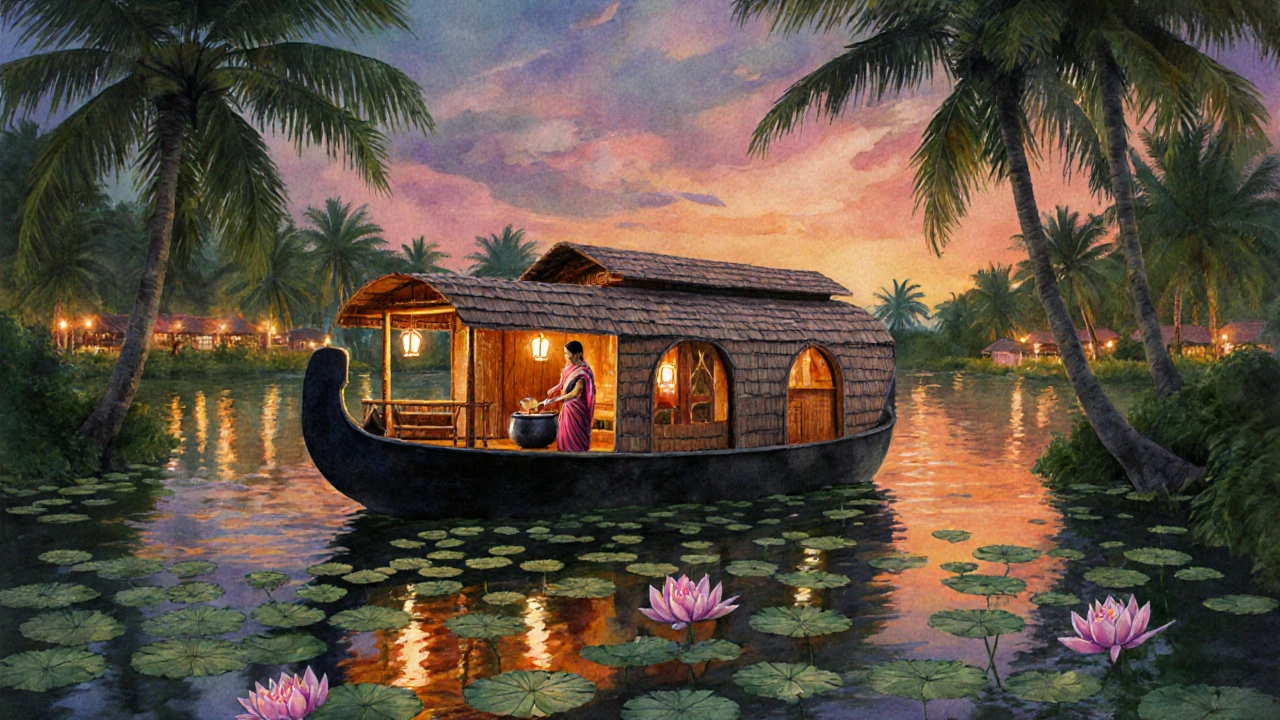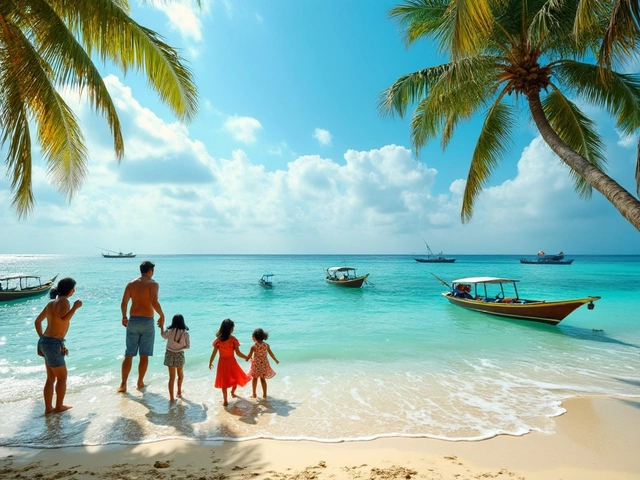South India Itinerary Planner
How many days do you have for your South India trip?
Planning a trip to South India but stuck on how many days you actually need? It’s not about squeezing in every temple and beach-it’s about experiencing the rhythm of the region without burning out. Most travelers underestimate how vast and varied South India is. You can’t do Kerala, Tamil Nadu, Karnataka, and Andhra Pradesh justice in five days. And if you try, you’ll end up exhausted, missing the real magic.
What Makes South India Different From the Rest of India?
South India doesn’t feel like North India. The languages are different, the food is spicier and coconut-based, the architecture is Dravidian with towering gopurams, and the pace of life is slower. You won’t find bustling markets like Delhi’s Chandni Chowk here. Instead, you’ll find quiet temple courtyards, backwater houseboats in Kerala, ancient stone carvings in Hampi, and beaches where locals fish at sunrise.
The region is divided into four major states: Kerala, Tamil Nadu, Karnataka, and Andhra Pradesh (with Telangana often grouped in). Each has its own identity. Kerala is lush and serene. Tamil Nadu is spiritual and dense with temples. Karnataka mixes history with modern cities. Andhra Pradesh offers coastal charm and temple towns like Tirupati. Trying to cover all four in a week? You’ll just be jumping between airports.
Minimum Time to See the Highlights
If you only have 7 to 10 days, focus on one state. That’s the rule of thumb most local tour operators follow. Here’s what you can realistically do in that time:
- Kerala (7-10 days): Kochi → Munnar → Alleppey (backwaters) → Kovalam Beach. Add a day for a spice plantation visit and a traditional Kathakali show.
- Tamil Nadu (7-10 days): Chennai → Mahabalipuram → Madurai → Rameswaram → Kanyakumari. You’ll see five UNESCO World Heritage sites in this loop.
- Karnataka (7-10 days): Bengaluru → Mysuru → Hampi → Coorg. Hampi alone needs two full days to walk through its ruins without rushing.
These itineraries include travel time between cities, which can take 4-6 hours by road. Trains are faster and more comfortable, but booking ahead is essential-especially in peak season.
14 to 21 Days: The Sweet Spot
If you want to experience the soul of South India without feeling like a tourist on a conveyor belt, aim for two to three weeks. This gives you room to breathe, eat slowly, and stumble upon hidden spots.
Here’s a sample 18-day route that balances culture, nature, and relaxation:
- Days 1-3: Chennai → Mahabalipuram (ancient stone chariots, Shore Temple)
- Days 4-6: Madurai (Meenakshi Temple at sunrise, local street food)
- Days 7-8: Rameswaram (pilgrimage site, long temple corridor)
- Days 9-10: Kanyakumari (sunrise over the Indian Ocean)
- Days 11-13: Munnar (tea plantations, misty hills, a day hike to Top Station)
- Days 14-15: Alleppey (overnight houseboat, slow drifting through canals)
- Days 16-17: Kochi (Jewish Quarter, Chinese fishing nets, spice market)
- Days 18: Fly out from Cochin
This route avoids backtracking. You’re moving south to north in Kerala, then looping back through Tamil Nadu. You’ll see temples, beaches, mountains, and backwaters-all without a single flight between cities (except the final departure).

Why 3 Weeks Is Worth It
People who spend three weeks in South India often say it changed how they travel. Why? Because they had time to sit with locals, not just photograph them.
In Mysuru, you can take a cooking class with a family and learn how to make rasam without a recipe. In Coorg, you might be invited to a coffee farm for a home-brewed cup. In Hampi, you’ll find monks meditating under banyan trees-not as a tourist attraction, but as part of daily life.
Three weeks also lets you catch the rhythm of festivals. If you’re there in January, you might stumble upon Pongal in Tamil Nadu, where homes are decorated with kolams (rice flour art) and families cook sweet pongal rice. In March, the Hampi Utsav brings music, dance, and elephant processions to the ruins.
What Not to Do
Don’t try to do everything. South India isn’t a checklist. Skip the overhyped tourist traps-like the crowded photo ops at Ooty’s toy train or the fake elephant rides in Pondicherry. They’re expensive, unethical, and take away from the real experience.
Also, don’t underestimate the heat. Even in winter (November-February), daytime temperatures hit 32°C (90°F) in coastal areas. Pack light cotton clothes, a wide-brimmed hat, and drink bottled water. Most hotels have filtered water, but avoid ice unless you know it’s made from purified water.
And skip the “South India in 5 Days” tour packages. They’re designed for people who want to say they’ve been, not for those who want to feel it.
Best Time to Visit
The ideal window is from October to March. November to February is peak season-cool, dry, and perfect for sightseeing. Monsoon hits Kerala and Karnataka in June-September, turning roads into rivers and some hill stations into foggy retreats. July and August are quiet, but you’ll miss out on temple festivals and beach vibes.
April and May are hot and humid, especially in Chennai and Bengaluru. If you’re okay with heat and fewer crowds, you can get great deals on hotels and flights. Just avoid midday outings.

Traveling on a Budget
You can travel South India for as little as $25-$40 per day if you’re frugal. Stay in local guesthouses (not resorts), eat at dhabas and street stalls (try masala dosa, idli sambar, and fish curry), and use trains instead of cabs. A second-class train ticket from Chennai to Madurai costs under $10 and takes 7 hours-more comfortable than most domestic flights.
Temple entry fees are cheap-usually under $2. Some, like the famous Tirupati temple, offer free meals to pilgrims. Don’t be surprised if a priest hands you a banana and a sweet as prasad.
What You’ll Miss If You Rush
If you only spend five days, you’ll miss the quiet moments: the smell of jasmine flowers at a temple gate at dawn, the sound of temple bells echoing over a backwater village, the taste of freshly ground coffee from a Coorg estate. You’ll see the sights, but not the soul.
South India rewards patience. It doesn’t shout. It whispers. And if you give it two weeks, it’ll show you things you didn’t know you were looking for.
Final Recommendation
For most travelers, 14 to 21 days is the sweet spot. It’s enough to feel the rhythm, taste the food, understand the culture, and still have time to rest. If you have less than 10 days, pick one state and go deep. If you have more than three weeks, add a few days in the Western Ghats or the Andaman Islands for a beach ending.
There’s no single right answer. But there’s a right way to plan: slow, intentional, and open to what the road-and the people-show you along the way.
Can I see South India in 7 days?
Yes, but only if you focus on one state-like Kerala or Tamil Nadu-and accept that you’ll only see the highlights. You won’t have time for side trips, deep cultural experiences, or relaxation. It’s possible, but not ideal.
Is 10 days enough for South India?
Ten days is enough for a solid introduction if you stick to one state and plan your route carefully. For example, Chennai → Mahabalipuram → Madurai → Kanyakumari works well. But you won’t get to the backwaters or the hills without rushing.
What’s the best way to travel between cities in South India?
Trains are the best option-affordable, reliable, and scenic. For shorter distances, book a private cab with a driver for the day. Avoid buses unless you’re on a tight budget; they’re slow and uncomfortable. Domestic flights are fast but expensive and add airport hassle.
Do I need a visa for South India?
South India is part of India, so you need an Indian visa. Most travelers get an e-Visa online before arrival-it’s easy, takes 3-5 days, and is valid for 60 days. Make sure your passport has at least six months of validity.
Are there any health risks when traveling in South India?
The biggest risk is food and water. Stick to bottled water, avoid raw salads, and eat food that’s freshly cooked and hot. Hepatitis A and typhoid vaccines are recommended. Malaria isn’t common in most tourist areas, but use mosquito repellent, especially near backwaters and rural villages.



